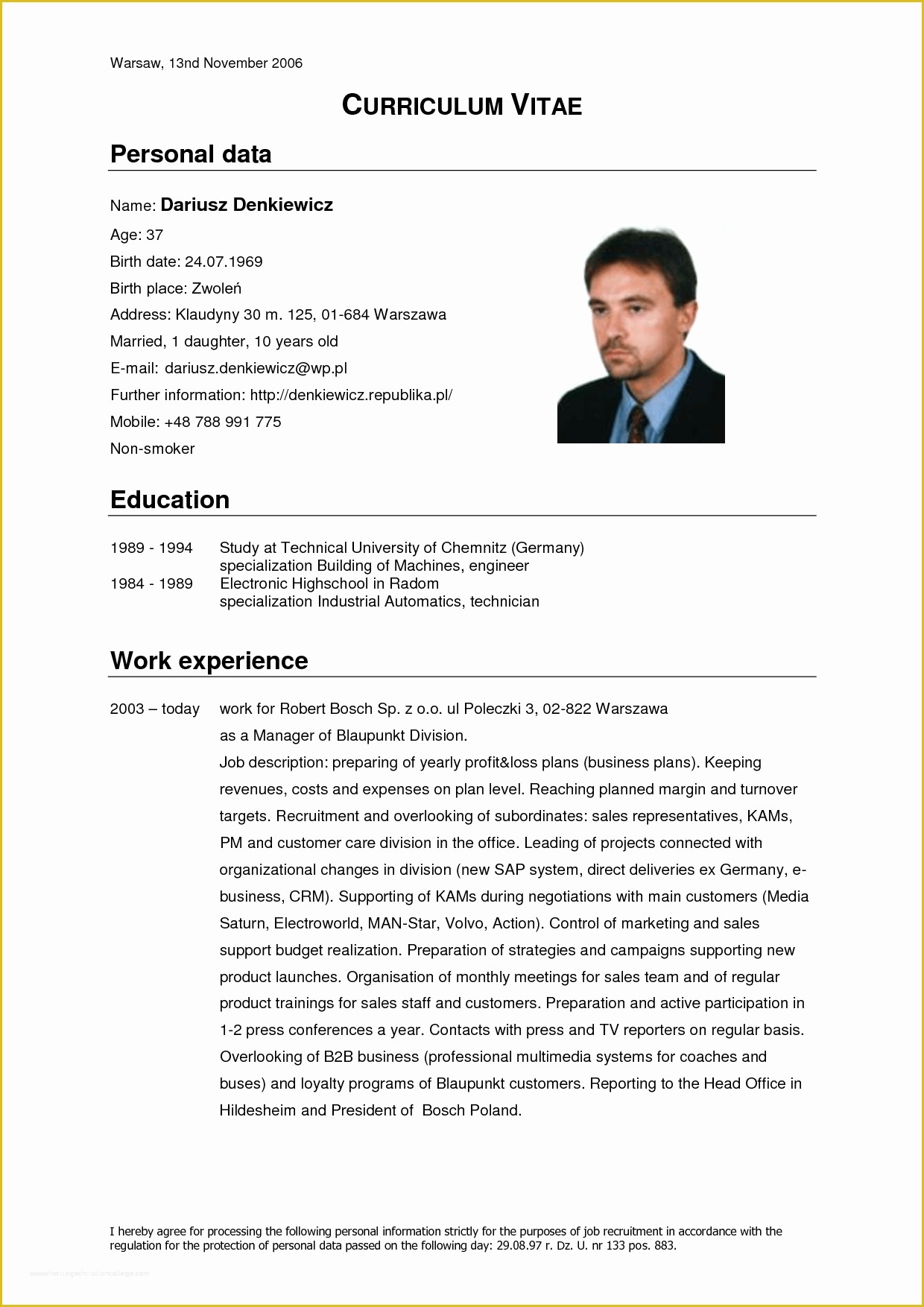What Is A Curriculum Vitae? Cv Template Inside

A curriculum vitae, often abbreviated as CV, is a comprehensive document that outlines an individual’s education, work experience, skills, and achievements in a clear and concise manner. It is a crucial tool used by job seekers to showcase their qualifications and increase their chances of landing an interview. Unlike a resume, which is typically limited to one or two pages, a CV can be longer and provides a more detailed account of a person’s academic and professional background.
The primary purpose of a CV is to demonstrate to potential employers that the applicant has the necessary skills, knowledge, and experience to excel in the desired role. A well-crafted CV should highlight the candidate’s strengths, accomplishments, and relevance to the position, making it easier for hiring managers to identify the most suitable candidate for the job.
When it comes to creating a CV, there is no one-size-fits-all approach. However, there are certain essential elements that should be included to make it effective. These elements include:
- Contact Information: Name, address, phone number, and email address
- Professional Summary: A brief overview of the candidate’s experience, skills, and career goals
- Education: Degrees earned, institutions attended, and relevant courses or specializations
- Work Experience: A reverse chronological list of previous work experience, including job titles, company names, and achievements
- Skills: A list of relevant skills, including language proficiency, software expertise, and other competencies
- Achievements: Notable accomplishments, awards, or recognition received in previous roles
- Volunteer Experience: Relevant volunteer work or extracurricular activities that demonstrate skills or character
- References: At least two professional references, including name, job title, company, and contact information
Here is a basic CV template to get you started:
Contact Information

- Name: [Your Name]
- Address: [Your Address]
- Phone Number: [Your Phone Number]
- Email Address: [Your Email Address]
Professional Summary

[Brief overview of your experience, skills, and career goals]
Education
- Degree: [Degree Earned]
- Institution: [Institution Attended]
- Relevant Courses: [Relevant Courses or Specializations]
Work Experience
- Job Title: [Job Title]
- Company: [Company Name]
- Dates of Employment: [Dates of Employment]
- Achievements: [Notable Achievements or Responsibilities]
Skills

- Language Proficiency: [Language(s) Spoken]
- Software Expertise: [Software or Tools Proficient In]
- Other Competencies: [Other Relevant Skills or Certifications]
Achievements
- Award: [Award or Recognition Received]
- Year: [Year Awarded]
- Reason: [Reason for Award or Recognition]
Volunteer Experience
- Organization: [Organization Name]
- Role: [Role or Position Held]
- Dates: [Dates of Volunteer Work]
- Achievements: [Notable Achievements or Responsibilities]
References
- Name: [Reference Name]
- Job Title: [Reference Job Title]
- Company: [Reference Company]
- Contact Information: [Reference Contact Information]
When creating your CV, remember to tailor it to the specific job you are applying for, highlighting the skills and experiences that align with the position. Use clear and concise language, and make sure to proofread your CV multiple times to catch any spelling or grammar errors.
In addition to the CV template, here are some tips to keep in mind:
- Use a standard font, such as Arial, Calibri or Times New Roman, and a font size between 10 and 12 points
- Use bolding or italicizing to highlight important information, such as job titles or company names
- Use bullet points to break up large blocks of text and make your CV easier to read
- Include relevant keywords from the job posting to help your CV pass through applicant tracking systems (ATS)
- Use action verbs, such as “managed,” “created,” “developed,” and “improved,” to describe your achievements and responsibilities
- Quantify your achievements by including specific numbers and metrics, such as “increased sales by 25% in one quarter” or “reduced project timeline by 30%”
By following these guidelines and using the provided CV template, you can create a effective and well-structured CV that showcases your skills, experience, and achievements, and helps you stand out in a competitive job market.
A well-crafted CV is essential for job seekers to demonstrate their qualifications and increase their chances of landing an interview. By including essential elements, such as contact information, professional summary, education, work experience, skills, achievements, volunteer experience, and references, and tailoring the CV to the specific job, candidates can create a effective and well-structured CV that showcases their strengths and relevance to the position.
What is the main purpose of a CV?
+The main purpose of a CV is to demonstrate to potential employers that the applicant has the necessary skills, knowledge, and experience to excel in the desired role.
What are the essential elements of a CV?
+The essential elements of a CV include contact information, professional summary, education, work experience, skills, achievements, volunteer experience, and references.
How long should a CV be?
+A CV can be longer than a resume, but it should still be concise and to the point. Aim for 2-3 pages, depending on your level of experience and the position you are applying for.
By following these tips and guidelines, you can create a effective and well-structured CV that helps you stand out in a competitive job market and increases your chances of landing an interview. Remember to tailor your CV to the specific job, highlight your strengths and achievements, and use clear and concise language to make your CV easy to read and understand.



